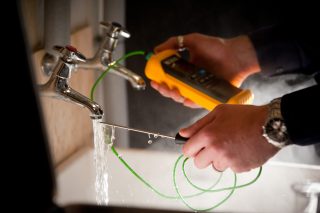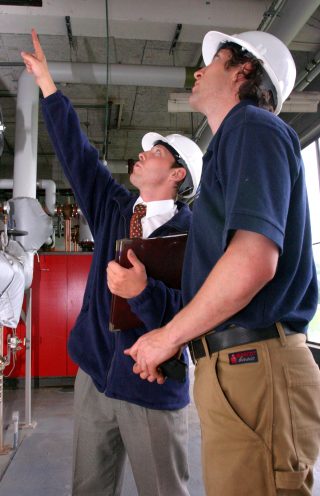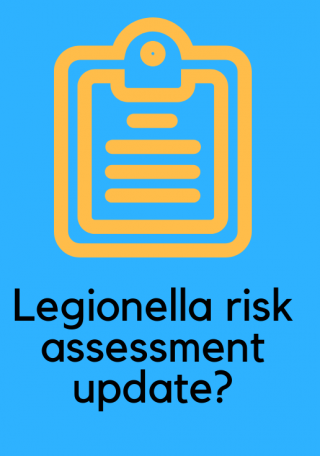Employee profile: David Edwards Legionella Risk Assessor

When did you join Dantek?
I have been working at Dantek for 10 years, I started doing monitoring, tank cleaning, remedial works and cooling tower disinfections. I then progressed into Legionella risk assessing about 5 years ago. Before joining Dantek, I was at another company cleaning and disinfecting cooling towers and carrying out remedial works on cooling towers as well as tank cleaning and disinfection work. So, by the time I came here as a lead engineer I already had a wealth of experience in the industry.
Becoming a Legionella risk assessor?
Most of my training has been on the job, I started at bottom and have worked my way up by building on experience. I am a qualified plumber so that really helped with my career as it meant I have a solid understanding of how buildings are plumbed and how water systems work. Particularly now as a risk assessor I can easily identifying risk as I know what looking at. I have done every single aspect of water hygiene so can draw on my knowledge when risk assessing a building.
I have spent years of my life stripping cooling towers and working in cooling towers so risk assessing them came very naturally as I have a thorough understanding of how they work.
Of course, I do have formal qualifications in legionella risk assessing but I firmly believe the best way to learn is from practical experience rather than academic study alone.
Where do you start when carrying out a legionella risk assessment?
I tend to start in main plant areas and work my way from there, generally they are the biggest areas of risk. Start with tanks and calorifiers and then move to identifying blinds ends, dead legs and return loops. I will also request to see any records or previous risk assessment on the building which can be a helpful starting point, although of course it needs to all be updated and schematics drawn to ensure they are accurate, and everything is up to date.
What challenges do you come across?
Cooling towers are challenging, as the legionella risk is potentially so much higher.
Buildings can also be deceptive as a straight forward looking 2 storey building could house any number of systems for example; there could be a lab or have reverse osmosis system, so you need to wait until you discover what is inside.
What work are you most proud of?
Herm Island is definitely my proudest achievement as I have risk assesses every single property on the Island. All the water is fed from a bore hole, so it has its complications. I go there every 2 years to update the risk assessments and am so impressed as they have carried out all the recommendations I made in my initial risk assessment. Given they cannot just pop to B&Q as they are an island, they must ship every single part and material in order to do all the remedials, but they have done it all and taken everything on board, which I am afraid to say not everyone does so thoroughly.
I also enjoy going into places and finding tank, calorifiers and even taps that people are unaware they even have. I am often told there are “no tanks in our building” only to find there were hidden behind a panel or roof space. It is really satisfying to know you have done a thorough job and being naturally inquisitive has helped me to make sure every tank, calorifer and tap are assessed.
What are the best features of our risk assessment reports?
I think customers find the asset register and photos useful as it clearly sets out exactly what you have on site. The risk score is also highly valued by customers because it shows what your risk is now and what your projected risk could potentially be if you put in place the control scheme suggested and carry out the remedial work.
We also explain why the risk score has been given with an in-depth explanation for customers. I think this is good because it helps to prioritise where to take action first to make the most impact to reduce the risk on their sites.
What do you enjoy about your job?
I love the freedom of the job and being out and about visiting different places. I like the trust the responsibility of the job and the satisfaction of knowing the work I do can make a difference by helping to ensure no one suffers with Legionnaires’ disease.
What do you like doing for fun?
I really enjoy sea fishing and try to do as much as I can. I support Cardiff City both at home and away. I am currently planning a holiday to Vietnam for next year which will be a great experience and hopefully I will be able to fit in a bit of fishing while I am there.


